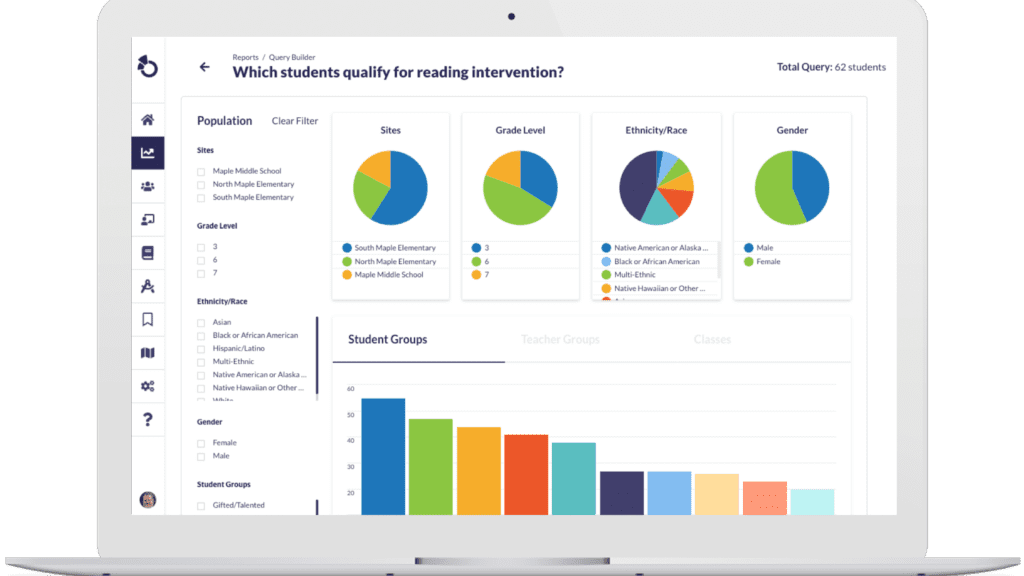Real Talk: What It Really Takes to Lead Successful Grading Reform
By: David Specht
After 10 years of reimagining grading, these two school leaders are still evolving – and they’re not afraid to do things differently.
 Grading reform is messy, but it’s worth it.
Grading reform is messy, but it’s worth it.
That was the central message from Jessica Espinoza and Alice Opperman of Emerson Public Schools (NJ), who shared their decade-long journey implementing standards-based grading during their session at ISTELive+ASCD 2025.
What started as a deeply rooted effort to promote equity has grown into a districtwide, cross-curricular system that blends teacher voice, clarity for families, and support from the right tools.
Here’s what they learned along the way, and why they’re still learning.
3 Huge Takeaways for School Leaders Considering a Shift to SBG
Clarity starts with fewer, better standards
In the early stages of their grading reform, Emerson tried to be comprehensive; too comprehensive, perhaps. Their first report card included nearly every New Jersey Common Core standard, which quickly became overwhelming for both teachers and families. Over time, they shifted to focusing on broader, more meaningful standards that better reflected student learning.
“So approximately 10 years ago, we started with a standard-based report card in grades K-6. Our report card at that time listed pretty much every standard we could think of. We realized that we really needed to narrow in on more umbrella standards or standards that really encapsulate the whole idea. We took away this larger report card with 50 different standards, and we went into something that was more streamlined. That really helped our teachers to focus their energy on what is really important for our students.”
Jessica Espinoza
Principal
,
Emerson Public Schools (NJ)
Lasting change doesn’t happen without teacher buy-in
Grading reform can’t succeed unless educators believe in it. That’s why Emerson made intentional space for teacher voice throughout the process; through pilots, surveys, honest conversations, and, most importantly, time. The district embraced a long-term mindset, giving teachers flexibility to experiment, reflect, and gradually evolve their practices instead of expecting instant transformation.
“We had some consultants sit with teams of teachers to work on these common scoring criteria. They were fully designed by teachers, and their colleagues had the chance to weigh in during the school year so that it didn't feel quite so top-down…the teachers had such a voice in making them that it didn't feel like we were taking their autonomy away.”
Alice Opperman
Director of Curriculum, Instruction & Technology
,
Emerson Public Schools (NJ)
Progress means nothing if families can’t follow it
Even with teachers aligned and systems in place, Emerson found that family understanding was key to making SBG truly work. While the district initially aimed to move away from traditional letter grades altogether, ongoing conversations with parents led to a reevaluation. By listening to families and adapting their approach, Emerson has found a middle ground, one that preserves the value of standards-based learning while making progress easier for families to understand.
“Five years ago, I would have said, ‘We will be totally done with points. We will never see a letter grade again. It's going to be so much better.’ But talking to parent after parent has led us to this compromised place where we are going to try it a little bit differently to give the parents what they need in order to understand us, but also keep that proficiency, competency, mastery information that we feel is so valuable as educators.”
Alice Opperman
Director of Curriculum, Instruction & Technology
,
Emerson Public Schools (NJ)
Still Evolving, and That’s The Point
For Jessica and Alice, grading reform has never been about arriving at a perfect system (and certainly not achieving it overnight). It’s been about listening, learning, and improving year after year. Their message to other school leaders? There’s no one “right” way to do SBG, but there is a thoughtful, collaborative way forward.
Emerson’s story shows that when you prioritize clarity, trust your teachers, and bring families into the conversation, the result isn’t just a better report card.
It’s a better learning experience for everyone involved.
How Otus Supports Emerson’s SBG Efforts
Emerson put in the work, but sustaining grading reform at scale is nearly impossible without the right tools to support teachers, track progress, and communicate effectively with families. That’s where Otus comes in.
- Streamlined Standards
Focus on the standards that matter most by building custom, district-aligned grading scales. Otus makes it easy to group standards, apply scoring criteria, and visualize mastery over time. - Transparent Communication
Share clear, standards-aligned feedback with families directly in Otus. Teachers can provide timely updates, rubric explanations, and progress reports, all in one place. - Flexible Grading Tools
Support teacher autonomy with multiple assessment types and scoring options, including points, rubrics, and mastery levels, all aligned to district-defined standards.
Related Resources
Request a demo!
See exactly how Otus can help your school accelerate student growth and improve student outcomes – all while saving educators time.





